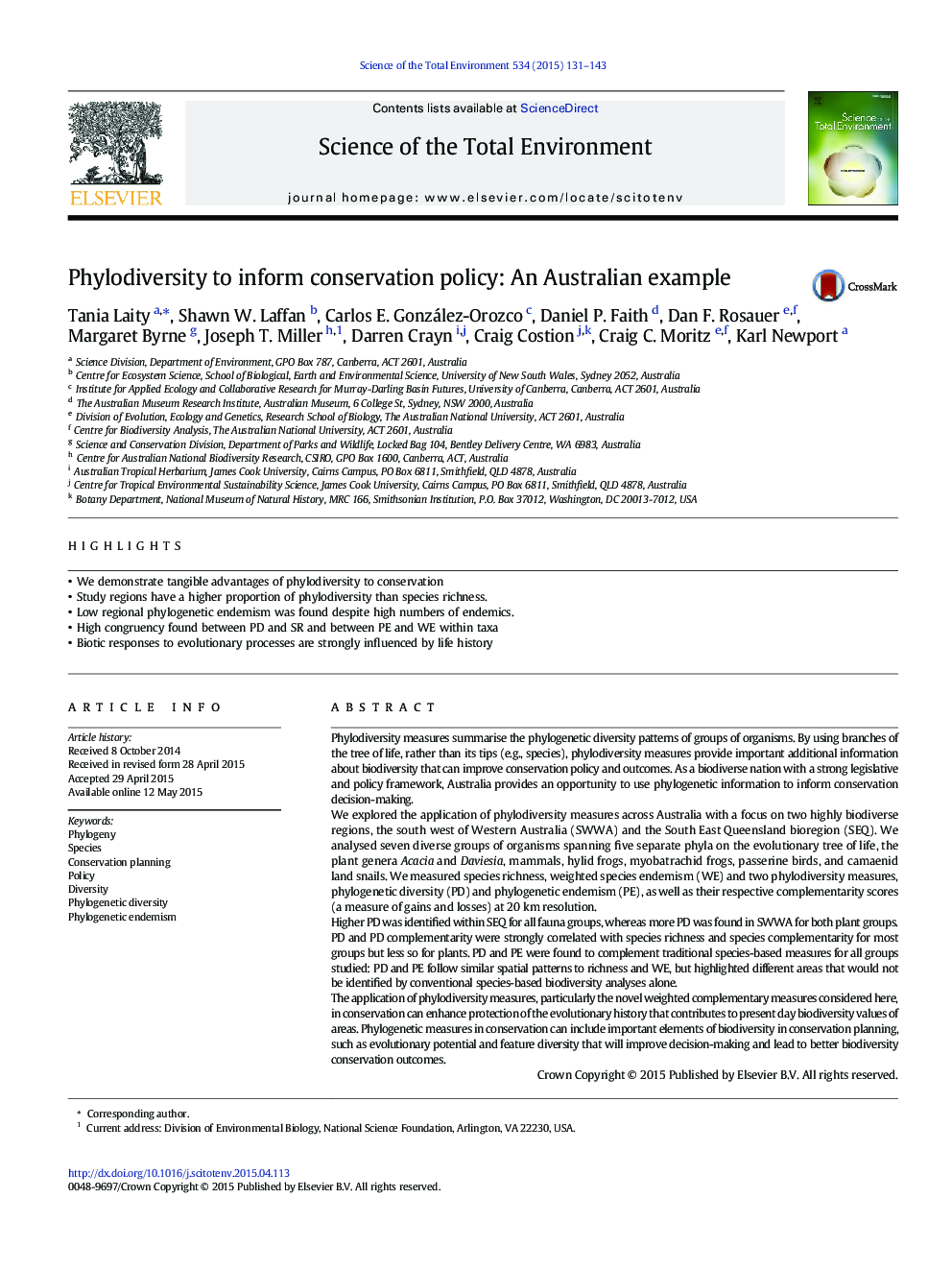| کد مقاله | کد نشریه | سال انتشار | مقاله انگلیسی | نسخه تمام متن |
|---|---|---|---|---|
| 4428341 | 1619750 | 2015 | 13 صفحه PDF | دانلود رایگان |
• We demonstrate tangible advantages of phylodiversity to conservation
• Study regions have a higher proportion of phylodiversity than species richness.
• Low regional phylogenetic endemism was found despite high numbers of endemics.
• High congruency found between PD and SR and between PE and WE within taxa
• Biotic responses to evolutionary processes are strongly influenced by life history
Phylodiversity measures summarise the phylogenetic diversity patterns of groups of organisms. By using branches of the tree of life, rather than its tips (e.g., species), phylodiversity measures provide important additional information about biodiversity that can improve conservation policy and outcomes. As a biodiverse nation with a strong legislative and policy framework, Australia provides an opportunity to use phylogenetic information to inform conservation decision-making.We explored the application of phylodiversity measures across Australia with a focus on two highly biodiverse regions, the south west of Western Australia (SWWA) and the South East Queensland bioregion (SEQ). We analysed seven diverse groups of organisms spanning five separate phyla on the evolutionary tree of life, the plant genera Acacia and Daviesia, mammals, hylid frogs, myobatrachid frogs, passerine birds, and camaenid land snails. We measured species richness, weighted species endemism (WE) and two phylodiversity measures, phylogenetic diversity (PD) and phylogenetic endemism (PE), as well as their respective complementarity scores (a measure of gains and losses) at 20 km resolution.Higher PD was identified within SEQ for all fauna groups, whereas more PD was found in SWWA for both plant groups. PD and PD complementarity were strongly correlated with species richness and species complementarity for most groups but less so for plants. PD and PE were found to complement traditional species-based measures for all groups studied: PD and PE follow similar spatial patterns to richness and WE, but highlighted different areas that would not be identified by conventional species-based biodiversity analyses alone.The application of phylodiversity measures, particularly the novel weighted complementary measures considered here, in conservation can enhance protection of the evolutionary history that contributes to present day biodiversity values of areas. Phylogenetic measures in conservation can include important elements of biodiversity in conservation planning, such as evolutionary potential and feature diversity that will improve decision-making and lead to better biodiversity conservation outcomes.
Journal: Science of The Total Environment - Volume 534, 15 November 2015, Pages 131–143
